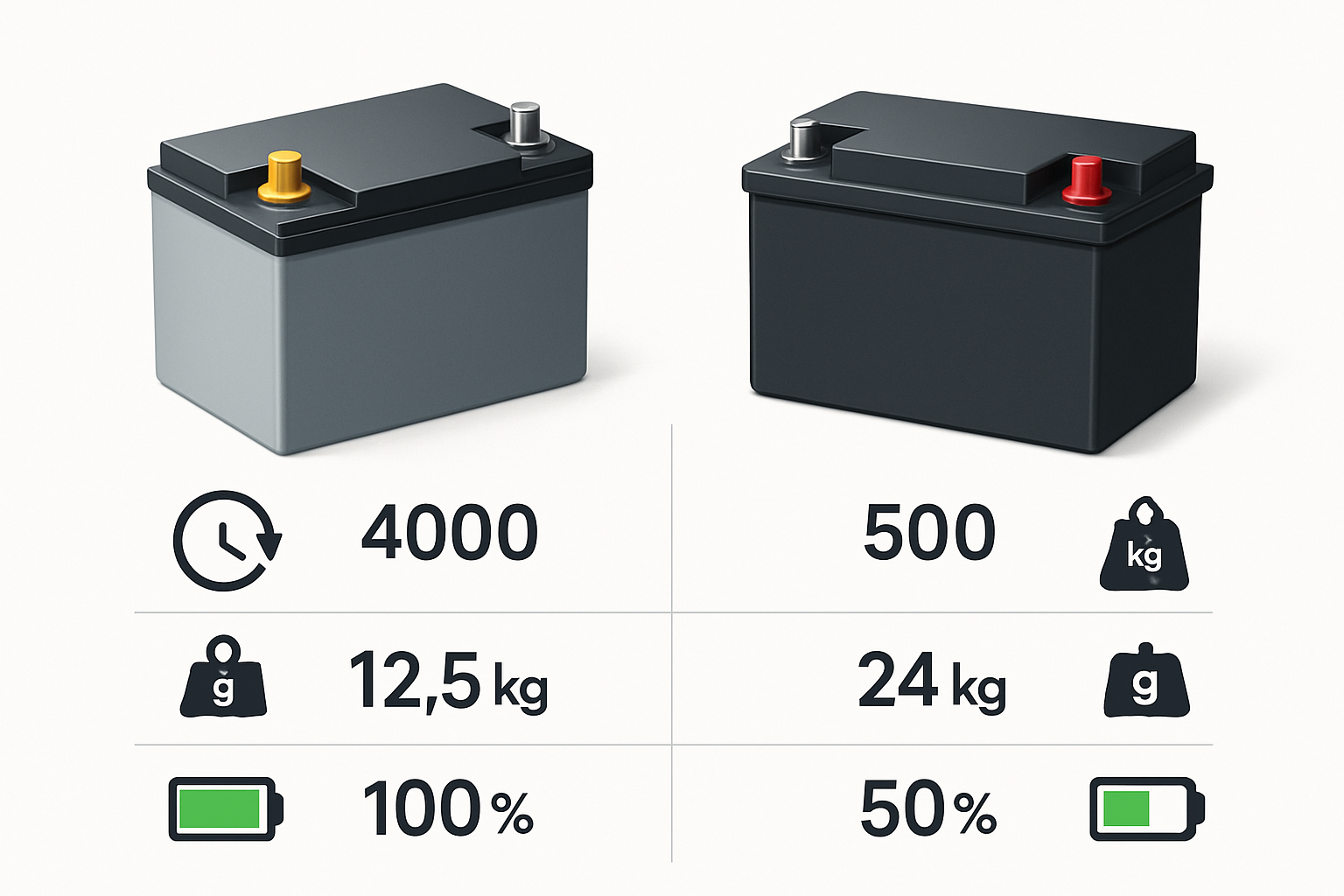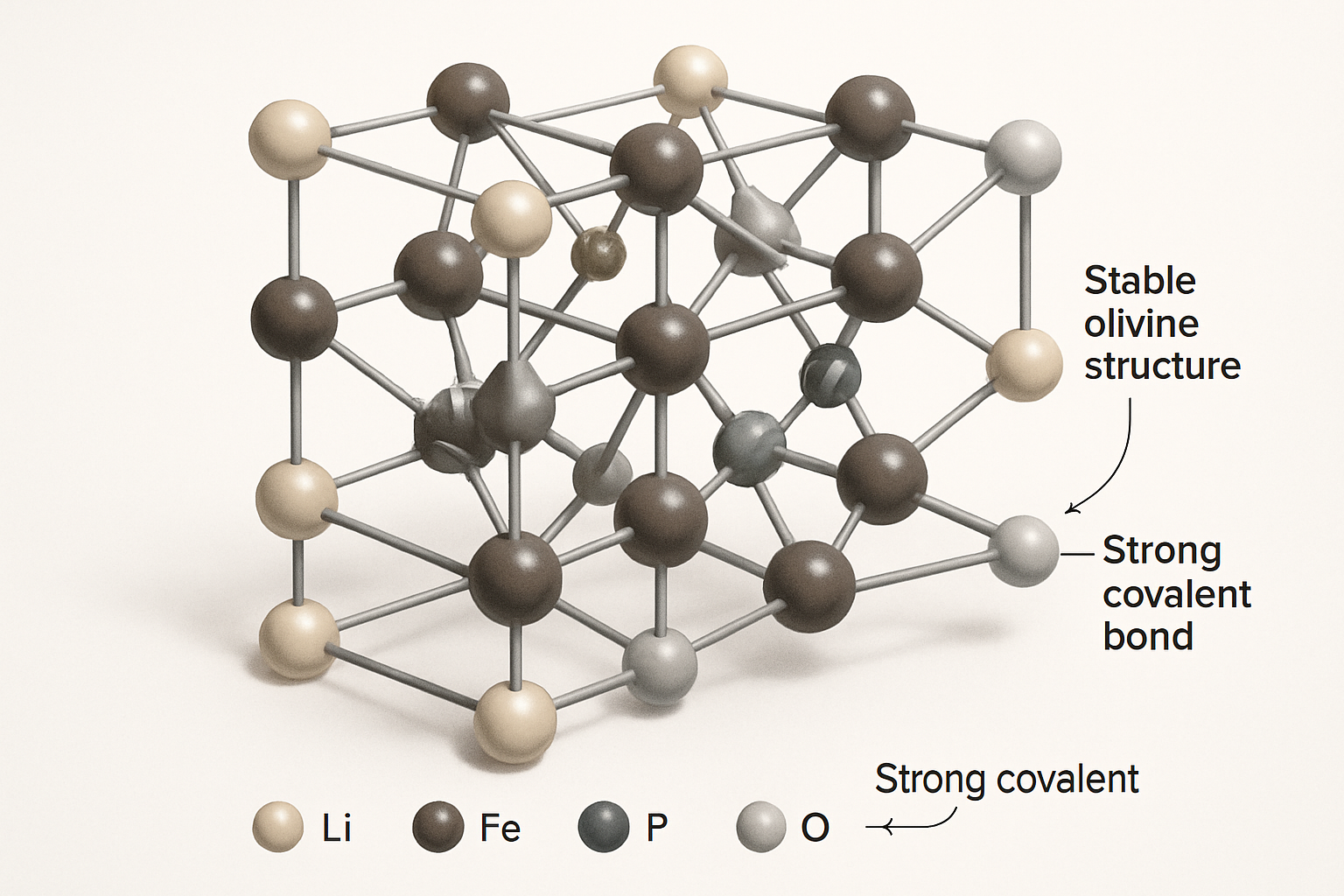A home battery storage system gives you control over your power. It can provide backup during outages, reduce reliance on the grid, and lower electricity bills by storing solar energy or off-peak power. At the center of modern energy storage is the Lithium Iron Phosphate (LiFePO4) battery. Known for its safety, longevity, and performance, LiFePO4 has become the preferred choice for residential applications. This text explains the essential components, sizing calculations, and assembly steps for creating a reliable home battery storage system.
Why Choose LiFePO4 for Your Home Energy Storage?
The battery chemistry you select is the most critical decision in your project. LiFePO4 batteries offer a combination of features that make them uniquely suited for home energy storage, providing a stable and long-lasting solution.
The Chemistry of Safety and Stability
LiFePO4 stands for Lithium Iron Phosphate. Unlike other lithium-ion chemistries that use materials like cobalt, LiFePO4 uses a phosphate-based cathode. This chemical structure is inherently more stable and less prone to thermal runaway, a condition where a battery overheats uncontrollably. The materials are also non-toxic, making them a more environmentally sound choice for a home installation. The focus on safety is paramount, and LiFePO4's stable chemistry provides significant peace of mind.
Superior Lifespan and Deep Cycle Capability
LiFePO4 batteries are known for their exceptional cycle life, often capable of delivering thousands of charge-discharge cycles. This translates to a service life that can exceed 10 years, far surpassing traditional lead-acid batteries. A key factor in this longevity is their tolerance for deep discharging. As detailed in the ultimate reference for solar storage performance, LiFePO4 batteries can regularly be discharged to 80-90% of their total capacity without significant degradation. This high usable capacity, or Depth of Discharge (DoD), means you get more energy out of a smaller, lighter battery pack compared to other technologies.
High Efficiency and Performance
Efficiency in a battery system is measured by its round-trip efficiency—the ratio of energy put in versus energy taken out. LiFePO4 batteries consistently demonstrate round-trip efficiencies greater than 90%. This means very little energy is wasted during charging and discharging cycles. They can also handle high charge and discharge currents, allowing them to power demanding appliances and recharge quickly from a solar array or the grid.
| Feature | LiFePO4 Battery | Lead-Acid Battery (AGM) |
|---|---|---|
| Cycle Life | 2,500 - 7,000 cycles | 300 - 700 cycles |
| Usable Capacity (DoD) | 80-95% | 50% |
| Round-Trip Efficiency | >90% | ~80-85% |
| Safety | High thermal stability, no off-gassing | Risk of explosion, acid leaks, off-gassing |
| Maintenance | None required | Regular checks, equalization charges |
Key Components of a LiFePO4 Home Battery System
A functional home battery storage system is more than just the battery itself. It requires a set of carefully selected components working together to manage, convert, and distribute power safely and effectively.
The Heart of the System: LiFePO4 Battery Pack
The battery pack is the core energy reservoir. For home systems, these are typically configured for 48V to improve efficiency and reduce current flow. A critical element of any LiFePO4 battery pack is the Battery Management System (BMS). The BMS is an electronic circuit board that protects the battery by monitoring cell voltage, temperature, and current. It prevents over-charging, over-discharging, and balances the voltage across all cells to maximize the pack's lifespan and ensure safe operation.
The Brains: Inverter and Charge Controller
The inverter converts the Direct Current (DC) power stored in your battery into Alternating Current (AC) power that your home appliances use. A hybrid inverter is a versatile option that can manage power from solar panels, the battery, and the utility grid simultaneously. If you are adding batteries to an existing solar installation, you may need a separate solar charge controller. An MPPT (Maximum Power Point Tracking) charge controller is recommended as it optimizes the power harvested from your solar panels.
Essential Safety and Ancillary Components
Safety should never be compromised. This includes correctly sized DC circuit breakers or fuses between each major component (panels to controller, controller to battery, battery to inverter). All wiring must be of the appropriate gauge to handle the expected current without overheating. A system monitoring device, often integrated into the hybrid inverter, allows you to track energy production, consumption, and battery status.
Sizing Your Home Battery Storage System
Properly sizing your system is crucial for meeting your energy goals without overspending. This involves analyzing your electricity usage and planning for your specific needs, whether for backup power or daily solar energy use.
Calculating Your Daily Energy Consumption
The first step is to conduct an energy audit. Review your past utility bills to find your average daily electricity consumption in kilowatt-hours (kWh). According to the U.S. Energy Information Administration (EIA), the average U.S. household consumes about 10,500 kWh per year, which is roughly 29 kWh per day. For a more precise figure, you can use a home energy monitor to track the real-time consumption of your major appliances.
Determining Battery Capacity (kWh)
Once you know your daily energy usage, you can calculate the required battery capacity. The basic formula is: Battery Capacity (kWh) = Daily Energy Needs (kWh) / Desired Depth of Discharge (DoD). For a LiFePO4 battery with a 90% DoD, if your goal is to cover 15 kWh of overnight usage, you would need a battery of at least 16.7 kWh (15 kWh / 0.90). If you require multiple days of backup power for an off-grid setup, you would multiply this figure by the number of 'days of autonomy' you need.
Matching Inverter and Solar Array Size
The inverter’s continuous power rating (in kilowatts, kW) must be large enough to handle the combined load of all appliances you want to run simultaneously. Its peak power rating determines its ability to start high-draw appliances like motors. The size of your solar array determines how quickly you can recharge your battery. The International Energy Agency (IEA) notes that the rapid growth in home storage is closely tied to the expansion of residential solar installations. A common approach is to size the solar array to fully recharge the battery on an average sunny day while also covering daytime energy needs.
The Assembly Process: A Step-by-Step Overview
Assembling a home battery system involves working with high-voltage electricity and should be approached with caution and careful planning. This overview provides a general sequence of operations.
Disclaimer: This information is for educational purposes only and is not a substitute for professional advice. Working with electricity can be dangerous. Always consult with a qualified electrician and adhere to local building and electrical codes.
Mounting and Placement
Choose a clean, dry, and well-ventilated location for your equipment, away from living spaces. Batteries and inverters produce some heat, so adequate airflow is necessary. Mount all components securely to a wall or a purpose-built rack. Maintain proper clearance around each device as specified by the manufacturer.
Connecting the Components
Connections should be made in a logical order with the main breakers turned off. A typical sequence is: connect the solar panels to the charge controller (or hybrid inverter), connect the battery to the inverter using a correctly sized fuse or breaker, and finally, connect the inverter to your home's electrical panel via a transfer switch or dedicated backup load center. Double-check all connections for correct polarity (+ to +, - to -) and tighten all terminals to the specified torque.
System Configuration and Testing
Before activating the system, program your inverter and charge controller with the correct charging parameters for LiFePO4 batteries. This includes setting the proper bulk, absorption, and float voltages. Once configured, you can perform initial tests by turning on the breakers in sequence and verifying that the system is operating as expected. Monitor the system closely during its first few charge and discharge cycles.
Achieving Your Energy Independence
Building a home battery storage system with LiFePO4 technology is a significant step toward managing your own energy resources. By carefully selecting components, correctly sizing the system, and prioritizing a safe installation, you can create a robust solution that provides reliable power for years. This empowers you with greater energy security, potential cost savings, and a smaller environmental footprint, all driven by a safe and efficient technology. The growth in battery deployment is a key part of the global energy transition, and residential systems play a vital role in this change.
Frequently Asked Questions
How does a LiFePO4 battery work?
A LiFePO4 battery functions by moving lithium ions between a cathode made of Lithium Iron Phosphate and an anode made of carbon. During discharge, these ions travel from the anode to the cathode, which generates an electrical current. When charging, an external power source pushes the ions back to the anode. The iron phosphate chemistry is exceptionally stable, which is a primary reason for its high safety profile.
Can I use any solar inverter with a LiFePO4 battery?
No, not all inverters are suitable. It is important to use an inverter or charge controller that has a specific charging profile designed for lithium batteries. An inverter intended for lead-acid batteries may use voltages that could damage a LiFePO4 battery or shorten its operational life. Always confirm compatibility by checking the manufacturer's specifications.
How long will a LiFePO4 home battery system last?
A properly maintained LiFePO4 battery can endure thousands of charge-discharge cycles. This often results in a lifespan of 10 to 20 years, depending on factors like usage patterns, operating temperature, and the effectiveness of the Battery Management System (BMS). This is a substantial improvement over the lifespan of older battery technologies.





Leave a comment
All comments are moderated before being published.
This site is protected by hCaptcha and the hCaptcha Privacy Policy and Terms of Service apply.